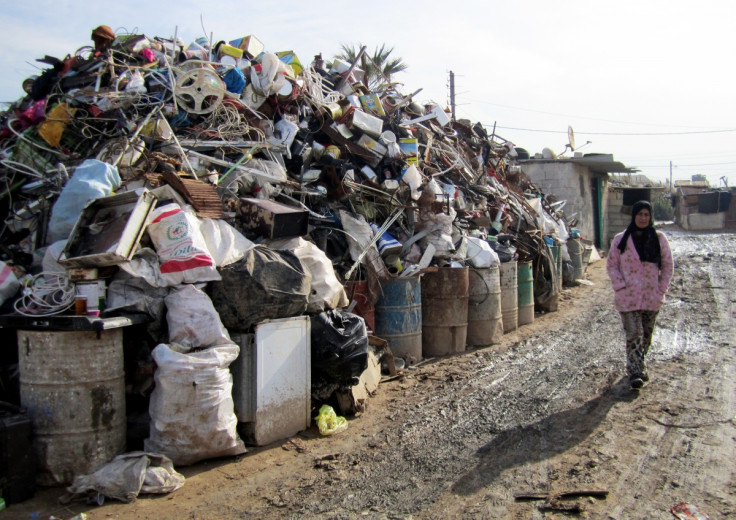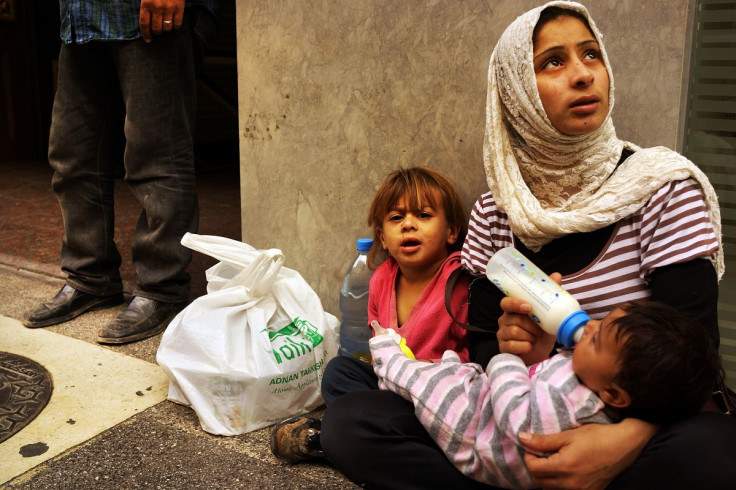Lebanon: Doctors warn of spread of cholera in refugee camps as rubbish crisis intensifies

Syrians and Palestinians refugees living in insanitary conditions in Lebanon's camps are at risk from cholera and typhoid epidemics as the country struggles with an ongoing rubbish crisis, health organisations have warned.
1.8 million refugees in Lebanon
Estimates place over 1.3 million Syrian and 500,000 Palestinian refugees in Lebanon – just under half of the country's population.
These figures give the country "the highest per capita concentration of refugees worldwide" according to the United Nations.
According to the UN, more than half of all Syrian refugees are under the age of 18.
It is projected that the Syria refugee population in Lebanon will reach 1.5 million people by the end of 2015.
While Lebanon is home to more than 1.8 million registered refugees – mainly Palestinian and Syrian (see box, right) – the government and local and international agencies have been overwhelmed by the Syrian crisis. The influx has left colossal gaps in support for the refugee population, particularly in the health sector.
"The population in Lebanon has increased by 30%, and subsequently the load of trash. It's worth noting that, in relation to the Syrian refugees, the overcrowded living and suboptimal sanitation conditions of the informal tented settlements that are spread across the country in more than 1,000 locations have increased the risk of diarrhoeal disease outbreaks among this refugee population as well as the host community," Dr Alissar Rady, officer in charge of WHO Lebanon, told IBTimes UK in an exclusive interview.
"WHO has supported the stepping up of the Ministry of Public Health epidemic preparedness efforts in Lebanon in view of increased risk of epidemic diarrhoeal diseases in such conditions."
Warnings against cholera and typhoid
Doctors working in the refugee camps have also raised the alarm after the Environment Ministry closed the controversial Naameh landfill, the major dumpsite for Beirut and Mount Lebanon, on 17 July, leading to the accumulation of piles of rubbish in the streets. To get rid of it, people started "backyard burning" (burning rubbish in the open) in crowded residential areas and garbage trucks illegally dumped the collected wastes in rivers.
Water pollution due to sewage and domestic waste is also of major concern because diseases such as typhoid, cholera, jaundice, dysentery and diarrhoea are infectious and spread through contaminated water.
Why are cholera and typhoid dangerous?
- Cholera is a bacterial infection caused by drinking contaminated water or eating food that has been contaminated by human waste. Outbreaks of the acute diarrhoeal disease, that can kill within hours if left untreated, are associated with poverty and poor sanitation. It has been described as the "scourge of the poor".
- Typhoid fever is a systemic infection caused by Salmonella Typhi, usually through ingestion of contaminated food or water. Symptoms include prolonged fever, headache, nausea, loss of appetite, and constipation or sometimes diarrhoea. Clinical severity varies and severe cases may lead to serious complications or even death.
"Sometimes this leads to the outbreak of epidemics and mass illness," according to a briefing for the United Nations Country Team (UNCT) prepared by WHO Lebanon country office and exclusively seen by IBTimes UK.
"Garbage dumped in the open all over the city is the breeding ground for mosquitoes and flies, which transmit diseases. There is also a great risk of diseases caused by bacteria, viruses and parasites through consuming contaminated food or drink.
"The condition is also favourable for occurrence of vector-borne diseases transmitted by mosquitoes, ticks and rodents."
The WHO cited skin and blood infections resulting from direct contact with waste and from infected wounds, eye and respiratory infections resulting from exposure to infected dust and fumes, and intestinal infections that are transmitted by flies or insects that are feeding on the accumulated waste as major issues resulting from the poor waste management.
The "capital of Diaspora" for Palestinians at risk
"When looking at illnesses among refugees, it's more of a long-term thing. The problem now is the garbage crisis in Lebanon," Maha Wakim, a psychologist working in Ain al-Hilweh, told IBTimes UK.
Ain al-Hilweh, known locally as the "capital of Diaspora" for Palestinians, is the most densely populated camp – and has swelled after Syrian Palestinians started pouring in following the Syrian crisis.

The doctor, who has been working as a health worker in camps for over 13 years and started on a programme of mental health and psycho-social support mainly directed at the Syrian Palestinian refugees at the beginning of August, also warned against the spread of waterborne diseases such as cholera and typhoid in the camp.
"The many people who have been affected by the sandstorm are old, and already have respiratory problems, asthma or allergies, but what we are concerned about is that usually after a storm like this we anticipate rain – and if it rains and all the garbage is everywhere and the water from the ground comes out in their pipes, that is a big threat," Wakim said.
Refugee camp budgets slashed
The camp, which houses some 70,000 Palestinians, operates under UNRWA (UN relief and works agency for Palestine refugees in the near east), but local authorities have seen their budget cut over the summer, Wakim explained.
In July, UNRWA halted its $100 (£65) monthly payments for housing subsidies due to a substantial budget shortage, threatening to leave the more than 43,000 Palestinian refugee families from Syria homeless. "So that also affects them," Wakim said, highlighting the need for more funds to deal with the garbage issue locally, and step up efforts to control the spread of the diseases.
The government's failure to solve a garbage disposal crisis, as well as chronic shortages of electricity and water, has sparked the You Stink campaign in the capital Beirut.

© Copyright IBTimes 2025. All rights reserved.






















